#antenna for lora module
Explore tagged Tumblr posts
Text
#iot lora antenna australia#iot lora antenna active#antenna for lora module#best antenna for lora#iot lora antenna kit#lora antenna range#antenna lora 868 mhz#865 mhz lora module#433mhz lora antenna#manufacturer of Iot Lora antenna#IoT Lora antenna wholesaler
0 notes
Text

Manufacturers of LoRa IOT Barrel Antenna in India 2023
A barrel antenna, also known as a "can" or "cylinder" antenna, is a type of antenna that has a cylindrical shape resembling a barrel. This design offers specific benefits for certain applications, particularly in terms of directionality and gain.
The barrel antenna design can provide some directivity and gain due to its shape. It can be particularly useful when you want to focus the radio frequency (RF) energy in a specific direction, or when you want to achieve a higher signal strength in a particular area. However, it's important to note that the gain and performance of an antenna depend on various factors including the frequency it's designed for, the materials used, and the surrounding environment.
#IoT Lora antenna 868#lora antenna 433mhz#lora module antenna#iot lora antenna amplifier#iot lora antenna australia#iot lora antenna active#antenna for lora module#best antenna for lora#iot lora antenna kit#lora antenna range#antenna lora 868 mhz#865 mhz lora module#433mhz lora antenna
0 notes
Text
Transferência de Arquivos via LoRa
Um projeto que venho fazendo há alguns meses e que muitas pessoas estavam interessadas em transmitir imagens e agora será possível, mas claro, respeitando as limitações.
Transferência da arquivos via LoRa é possível assim como qualquer outra modulação, mas existem desafios particulares nessa tarefa que em outras modulações podem ser mais fáceis. Sobre a modulação LoRa Antes mesmo de partimos para a transferência de arquivos via LoRa, é preciso entender que o LoRa não foi feito para esse tipo de aplicação e sim para dispositivos IoT, mesmo embora tenha uma taxa…

View On WordPress
#arduino lora antenna#biblioteca lora arduino#esp32 lora arduino#esp32 lora arduino library#lora and arduino#lora arduino#lora arduino adafruit#lora arduino board#lora arduino example#lora arduino library#lora arduino projects#lora transmitter and receiver arduino#module lora arduino#multiple lora arduino#rfm9x lora arduino
0 notes
Text
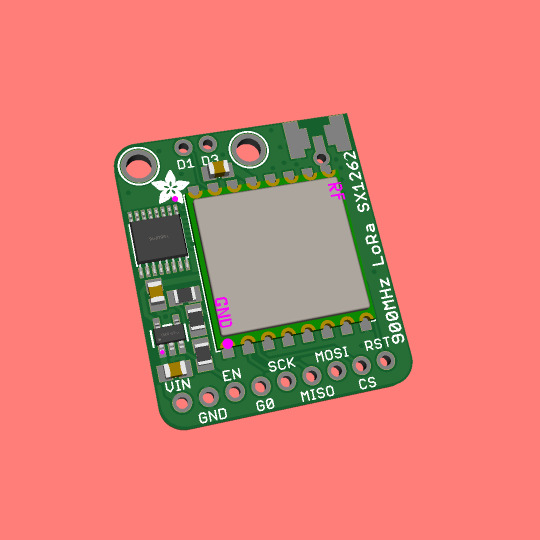
The SX1262 is an updated LoRa chip, so we made a breakout 📡🔧🔄
We got a hot tip to check out the Semtech SX1262 (https://www.digikey.com/short/504bpwww) - compared to our classic SX127x series of "RadioFruit" boards (https://www.adafruit.com/product/3072) the '1262 has lower power usage and longer range as well as some more options for spread-spectrum and extra modulation protocols. Most folks will probably use it for LoRa / LoRaWAN. The pinout is slightly different, so a few changes were made to the classic PCB. We also had some extra room, so we tossed in mounting holes. With this design, you can use wire, uFL, or SMA antennas - just solder whichever connector you desire. Note that the new chips are not software-compatible, so some driver tweaks will be needed to make it work. Coming soon.
#adafruit#lora#semtech#sx1262#longrange#lowpower#wirelesscommunication#radiotechnology#pcbdesign#antennadesign#iotdevices
8 notes
·
View notes
Text
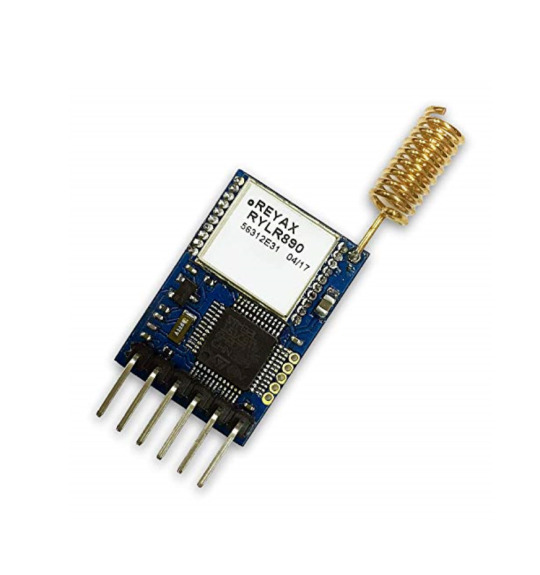
LoRa communication Module
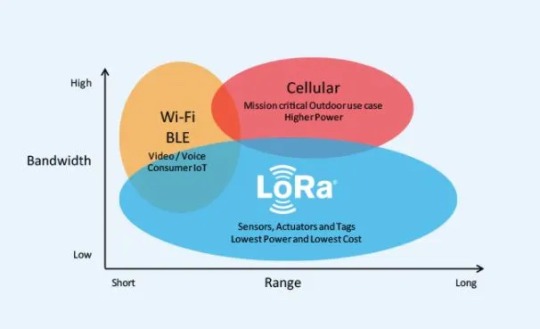
youtube
:
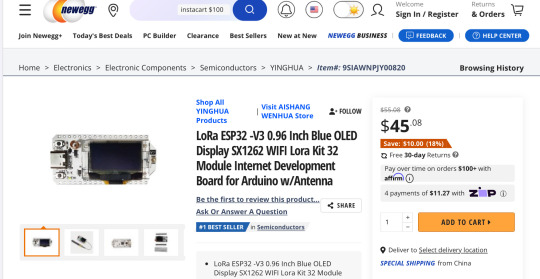
. https://www.newegg.com/p/2A3-00UG-000J9
youtube
.
.
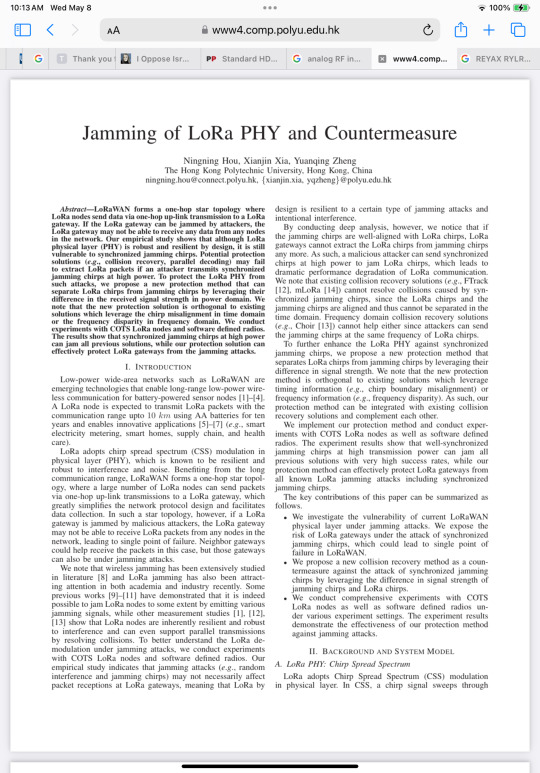
. https://www4.comp.polyu.edu.hk/~csyqzheng/papers/LoRaJamming-INFOCOM21.pdf
2 notes
·
View notes
Text
RF Test Equipment Market Size Ensuring Reliability in High-Frequency Communications
The RF Test Equipment Market Size is critical for validating the performance of wireless communication systems—including 5G, IoT networks, aerospace, defense, and automotive radar. With spectrum complexity increasing and RF devices integrating with digital processors, precise testing across frequencies, modulation schemes, and transmission standards is essential to ensure reliability, compliance, and security.
Market Size Research Future projects that global RF test equipment demand will reach USD 15.8 billion by 2030, growing at a CAGR of 6.7% between 2023 and 2030. Factors driving this growth include rapid global deployment of 5G infrastructure, expanding wireless device usage, and stringent regulatory standards.
Market Size Overview
RF test equipment encompasses a range of tools—signal generators, spectrum analyzers, vector signal analyzers, network analyzers, power meters, and communication testers—that verify signal integrity, receiver sensitivity, transmitter power, and RF chain performance. These instruments are essential during R&D, manufacturing validation, and routine field maintenance.
As devices like smartphones, IoT sensors, vehicle-to-everything (V2X) units, and network nodes become more complex, RF testing is moving toward automated, cloud-enabled, and AI-assisted solutions to support high-volume production and sustainable operation.
Key Drivers
1. 5G Rollout and Beyond
With the rollout of 5G and exploration of 6G, test instruments must support wide frequency bands, millimeter-wave testing, ultra-low latency metrics, and multi-antenna (MIMO) evaluation.
2. Growth of IoT and Connected Devices
The proliferation of IoT devices from home automation to industrial sensors is increasing the load on RF testing for Bluetooth, Wi-Fi, LoRa, NB-IoT, and cellular modules.
3. Automotive Radar & V2X Testing
Advanced driver-assistance systems (ADAS) and autonomous vehicles rely on radar and communication subsystems, increasing demand for precise RF field-testing equipment.
4. Regulatory and Compliance Testing
Equipment manufacturers must meet global standards for electromagnetic interference (EMI), wireless certification, and spectral compliance—driving the demand for EMI testing chambers, signal analyzers, and filters.
Market Size Segmentation
By Product Type:
Signal Generators
Spectrum Analyzers
Vector Signal Testers
Network Analyzers
Power Meters
Others (EMI Pre-compliance Tools)
By Frequency Range:
Below 3 GHz
3–6 GHz
Above 6 GHz (including mmWave)
By End User:
Telecommunication Infrastructure
Consumer Electronics
Aerospace & Defense
Automotive & Transportation
Industrial & Manufacturing
Research & Academic Institutions
Regional Overview
North America
Leading in test instrumentation adoption due to advanced 5G deployments, strong presence of OEMs, and robust R&D investment.
Europe
Market Size growth driven by 5G expansion, automotive radar development, and stringent certification processes in Germany, the UK, and France.
Asia-Pacific
The fastest-growing region, with China, Japan, South Korea, and India rapidly deploying 5G networks and scaling consumer electronics production.
Key Players
Major RF test equipment manufacturers are advancing into integrated software and AI-driven testing platforms:
Keysight Technologies
Rohde & Schwarz
National Instruments (NI)
Anritus Corporation
Tektronix (Fortive Corporation)
EXFO Inc.
Oscilent
VIAVI Solutions
LitePoint (Novanta)
Yokogawa Electric
These providers offer solutions ranging from lab-grade instrumentation to portable handheld testers and cloud-enabled automated test suites.
Trends to Watch
Cloud-Connected Test Labs: Remote calibration, automated reporting, and shared test infrastructure via cloud platforms.
AI-Enhanced Testing: Predictive fault detection and self-tuning instruments reduce cycle time and improve yield.
Portable RF Analyzers: Compact tools for field engineers testing base stations, towers, and broadcasting equipment.
Integrated IoT Testbeds: Platforms that combine RF testing with protocol analysis for IoT connectivity validation.
EMC/EMI Convergence: Multi-function analyzers covering both RF performance and EMC compliance testing.
Challenges
High Cost of Advanced Testers: Especially for mmWave and multi-antenna systems.
Complexity in Test Integration: Integrating RF test workflows with software and digital validation ecosystems.
Short Technology Lifecycles: Rapid need to update test equipment with new standards like 5G-Advanced and 6G.
Skilled Workforce Shortage: RF instrumentation prescribing domain knowledge is still rare.
Future Forecast
RF test platforms will evolve toward modular, scalable, and software-defined instruments compatible with automated production lines and remote management frameworks. The integration of edge-AI and digital twin-based test management will further accelerate deployment and reduce downtime.
Trending Report Highlights
Explore related sectors driving enhanced testing, connectivity, and automation:
USB Flash Drives Market Size
Bakery Release Agents Market Size
Circular Waterproof Connector Market Size
Capacitor Bank Controllers Substation Automation Market Size
Robotic Waste Sorting Market Size
Electromagnetic Compatibility (EMC) Filtration Market Size
Flash Charger Adapter Market Size
PM2.5 Sensor Market Size
Switched Capacitor Filter Market Size
Ultrasound Pulser IC Market Size
Pressfit Connectors Market Size
Sensor Signal Conditioner ICs Market Size
Waterproof LED Module Market Size
0 notes
Link
[ad_1] If you've been following our Meshtastic hardware reviews, you've likely seen our recent coverage of the WisMesh Board ONE Pocket - RAK's handheld Meshtastic device. Today, we're examining the heart of that system: the WisMesh Board ONE bare board itself.Unboxing and Initial ImpressionsThe WisMesh Board ONE arrives in simple but secure packaging. Inside, you'll find:The main WisMesh Board ONE baseboard1 LoRa antenna (FPC base antenna)1 high-quality USB cableDepending on your configuration, you might also receive:Optional OLED 1.3" display (pre-mounted or separately)Optional RAK12500 GNSS moduleThe board itself makes an immediate impression with its thoughtful layout and compact form factor. At just 60.8 x 22.9 x 9.85 mm, it packs impressive functionality into a small footprint. The PCB quality is excellent, with clean traces and robust component mounting.Features OverviewThe WisMesh Board ONE comes with several notable features:RAK4631 Core: Based on Nordic nRF52840 (ARM Cortex-M4F CPU, 1MB Flash, 256KB RAM)Semtech SX1262 LoRa transceiver1 WisBlock sensor slot for expandability (occupied if GPS module installed)Optional 1.3" OLED display - noticeably larger than common 0.96" screensImproved BMS (Battery Management System) with NTC for safer charging and dischargeSolar & Battery connector - strategically positioned for optimal enclosure designThree mounting holes for secure installationExternal iPEX connector - for antenna upgradesUSB-C for power and programmingWhat makes this board particularly interesting is how it improves upon RAK's previous RAK19007 design with specific optimizations for solar-powered and fixed deployments.Configuration Options & PricingThe WisMesh Board ONE is available in several configurations:Base Board Only: $29.97With RAK12500 GNSS Module: $50.97With GNSS Module & OLED Display: $52.97This tiered pricing lets you select only the components needed for your specific project.Flashing the FirmwareThe device comes preflashed with Meshtastic version 2.5.20, but if you want to update it, here's the process:Erase the Existing Firmware:Navigate to the Meshtastic Web Flasher.Select RAK WisBlock 4631 from the device options.Click on the trash symbol next to the flash button to erase the existing firmware.You'll need to enter DFU mode (Device Firmware Update mode) to proceed.Entering DFU Mode:Option one: Double press the button on the right (the one used for reset) and a USB drive should show up on your computerOption two: Click on Enter DFU Mode (After Clicking on Flash and Continue), select the correct COM Port, then click Connect.Erase the Flash in DFU Mode:Once in DFU mode, the WisMesh Board ONE Pocket will appear as a drive on your computer.Download the Flash Erase UF2 file and copy it to the DFU drive. After transferring, the drive will disappear.Once the device is done rebooting, go back to the web flasher and click on Open Serial Monitor, select the correct COM Port, then click Connect.Give it a couple seconds and it should say done once it is done formatting.Flashing the New Firmware:After erasing the existing firmware, return to the Web Flasher and choose the latest firmware version available.Select Flash, and you will need to enter DFU mode again (repeat the previous step).Once in DFU mode, download or copy the UF2 file for the new firmware onto the DFU drive.The device will automatically reboot once the transfer is complete and will start running the new firmware.Detailed Comparison: WisMesh Board ONE vs. RAK19007For Meshtastic enthusiasts and solar node builders, the RAK19007 has been a popular choice since its release. I was eager to see how the WisMesh Board ONE improved upon this foundation. Here's a comprehensive comparison of these two solar-optimized boards:Core Specifications Comparison FeatureWisMesh Board ONERAK19007CPUNordic nRF52840Nordic nRF52840LoRa ChipSemtech SX1262Semtech SX1262Size60.8 x 22.9 x 9.85 mm64 x 20 x 12 mmExpansion1x WisBlock Sensor Slot4x WisBlock Sensor Slot 1x IODisplayOptional 1.3" OLEDOptional NA" OLEDAntennaiPEX connectoriPEX connectorBase Price$29.97$29.99 While the core specifications remain similar, the WisMesh Board ONE introduces three significant design improvements that address specific pain points experienced with the RAK19007:1. Reimagined OLED Display PlacementOn the RAK19007, the OLED display connector was positioned 90 degrees to the board. This created one main problem:The screen was at an angle that made reading information difficultThe WisMesh Board ONE completely reimagines this arrangement, mounting the OLED display 180/0 degree/s to the board. This redesign:Improves screen readability when mounted in a case2. Strategic Battery and Solar Connector OrientationThe RAK19007's battery and solar connectors were positioned on the top face of the board. While functional, this arrangement created consistent headaches for enclosure design:Cables had to bend awkwardly, adding unnecessary heightStrain on connectors increased with compact enclosuresThe WisMesh Board ONE addresses this directly by repositioning these connectors to the side edge of the board, which:Enables much flatter enclosure designs (potentially reducing case thickness by 5-10mm)Creates a natural cable path that reduces connector strain3. Enhanced Battery Management SystemThe RAK19007's battery management was functional but basic. The WisMesh Board ONE significantly upgrades this with:NTC thermistor on the board for simplified buildsSupport for external NTC connection for batteries with built-in temperature sensorsBetter protection against overcharging in variable solar conditionsPerformanceBattery Life: Real-World ConsiderationsThe board's power consumption is in line with what you'd expect from nRF52840-based devices. It's important to note that adding the optional OLED display does increase power consumption significantly, making it less ideal for pure power efficiency.Range & Connectivity: Upgradable and AdaptableThe included FPC antenna provides pretty solid range from 800-1000 meters if you angle towards your receiving node. it’s was really competitive with something like Sensecap T1000E. If you plan to build a small sleek node, it would definitely perform well, but the real strength lies in the upgrade path:The iPEX connector allows for connecting any LoRa antenna via an adapter cableWith a quality external antenna, range extends dramaticallyThis flexibility makes it suitable for both urban and rural deployments. This upgradability gives the WisMesh Board ONE a significant advantage over fixed-antenna designs like the T1000-E.WisBlock Sensor Slot: Limited But ValuableOne key difference from the RAK19007 is that the WisMesh Board ONE includes just a single WisBlock sensor slot (compared to four on the RAK19007). This modular expansion system allows you to:Add environmental sensors (temperature, humidity, pressure)Monitor air qualityAdd many other capabilities through the extensive WisBlock ecosystemThe plug-and-screw design makes sensor swapping incredibly easy – just one screw secures the module in place.Market Positioning: The nRF52 Board LandscapeLooking at the market for bare boards based on nRF52, we can see several options, each with their own tradeoffs:Heltec T114: After their recent quality control issues, user trust has eroded significantlyWio Tracker 1110 Dev Kit for Meshtastic: Huge size with no solar supportXIAO nRF52840 & Wio SX1262 Kit: Fairly new and without a full BMS; however, with time it might start supporting the expansion boards used for XIAO ESP32S3 & Wio-SX1262 Kit that adds BMS, screen, and groove connectors for sensorsIn this landscape, the WisMesh Board ONE hits a very sweet spot within the RAK ecosystem. Both the RAK19007 and WisMesh ONE are priced the same, but they serve different needs:RAK19007 StrengthsFor solar nodes that need multiple sensors (like weather stations), the RAK19007 offers more expansion slots. While you don't get the NTC feature, it is field-tested with good reliability overall despite occasional issues.WisMesh Board ONE StrengthsThe WisMesh Board ONE shines as a versatile board for:Ultra-compact solar nodes with really good BMS, NTC capabilitiesSmall handheld devices with properly integrated displays - something RAK was missing with the 19007 due to screen orientation issuesProduct Positioning: Where It FitsAt $29.97 for the base board, the WisMesh Board ONE is priced identically to the RAK19007, yet offers fewer expansion slots. So what's the value proposition?The WisMesh Board ONE appears to be targeting a specific niche: optimized form factor and improved power management for standalone solar-powered deployments or very small and sleek handheld builds, especially where a low-profile enclosure is desired. It trades expansion slots for:A more thoughtful physical layout optimized for enclosure designBetter battery management for solar applicationsDedicated screen connector with improved positioningOverall slimmer profile for compact enclosuresThis makes it particularly well-suited for fixed installations/builds where a clean, reliable deployment is more important than having multiple sensors. For deployments that need multiple sensors, the RAK19007 remains the better choice despite its design limitations.Final Thoughts: Market Positioning and Value PropositionThe WisMesh Board ONE represents an interesting evolution in RAK's Meshtastic board lineup, with some clear improvements over the RAK19007 but also some significant tradeoffs.Improvements Worth NotingBetter BMS with NTC support: Enhanced battery management makes solar deployments safer and more reliableOptimized connector positioning: Better angled solar and battery connectors reduce enclosure thicknessProperly oriented display: The 180/0-degree screen mounting significantly improves usabilityCompact, low-profile PCB: At just 60.8 x 22.9 x 9.85 mm, it's ideal for space-constrained deploymentsThe Major TradeoffDespite these improvements, the WisMesh Board ONE reduces expansion capability from four WisBlock sensor slots to just one - yet maintains the same $29.97 price point as the RAK19007. This creates a curious situation where you're paying the same amount for less expandability, albeit with better design.The Strategy Behind the DesignThis product's positioning becomes clearer when considering RAK's market observations. The RAK19007 unexpectedly became popular for handheld builds despite its solar connections and awkwardly angled screen - many builders simply avoided using the display altogether. RAKwireless appears to have recognized this pattern and created a board specifically optimized for two use cases:Ultra-compact solar nodes with minimal sensor requirementsSmall handheld devices with properly integrated displaysRecommendationFor users with very specific requirements matching these use cases, the WisMesh Board ONE is an excellent fit. However, for general-purpose deployments, we can't broadly recommend it over the RAK19007:For solar nodes: The RAK19007 offers more expansion slots if you need multiple sensorsFor handhelds with screens: The WisMesh Board ONE stands alone as the only reliable NRF52-based option with proper screen support and quality BMS (especially since Heltec's reputation suffered after recent quality issues with T114)Ultimately, the WisMesh Board ONE fills a niche but important gap in the market. Rather than seeing it as a replacement for the RAK19007, it's better viewed as a specialized alternative for specific deployment scenarios where its design improvements outweigh the reduction in expansion capability.If someone were to design an enclosure that is wider rather than taller, where we can use the RAK19007 with the screen oriented the correct way, would the WisMesh Board ONE still be a point of interest? Are the smaller footprint of the PCB design, NTC capabilities, and better oriented plugs alone enough to sacrifice the expansion slots? Let us know your thoughts in the comments below. [ad_2] Source link
0 notes
Text
#IoT Lora antenna 868#lora antenna 433mhz#lora module antenna#iot lora antenna amplifier#iot lora antenna australia#iot lora antenna active#antenna for lora module#best antenna for lora#iot lora antenna kit#lora antenna range#antenna lora 868 mhz
0 notes
Text

5G 12dBi Magnetic Antenna with RG174 Cable
A 5G 12dBi magnetic antenna is a type of antenna designed to enhance the performance of 5G wireless communication devices, such as routers, hotspots, or modems. Let's break down the key features:
5G: 5G is the fifth generation of wireless technology, which offers faster data speeds, lower latency, and greater capacity compared to previous generations (4G, 3G, etc.). The antenna is specifically designed to work with 5G networks and devices.
12dBi Gain: The "12dBi" figure refers to the antenna's gain, which is a measure of how much the antenna can increase the power of the signal it receives or transmits. A higher gain indicates better signal reception and transmission capabilities. In this case, a 12dBi gain suggests that this antenna can significantly boost the signal strength.
Magnetic Antenna: The term "Magnetic Antenna" indicates that the antenna can be attached to metal surfaces using a magnetic base. This feature provides flexibility in terms of placement and allows for easy positioning on metallic surfaces, like the roof of a car or a metal housing for a 5G device.
Magnetic antennas are often used in mobile applications or in scenarios where temporary or flexible mounting is required. This type of antenna is convenient because it can be easily installed and removed, making it suitable for mobile installations or where drilling holes or more permanent mounting solutions are not practical.
#rf antenna#RF Antennas#RF Antenna at Best Price in India#RF antenna system#radio frequency antenna#Best RF Solution Provider#RF Antenna Suppliers#Manufacturer of RF Antenna#rf antenna manufacturers in india#RF Antenna Manufacturer#RF Antenna Exporters#RF Antenna Latest Price#Wireless HF Antenna#RF Antenna Companies in India#Wholesaler of RF Antenna#RF Antenna Amplifier#RF Antenna Module#2.45 GHz Antenna Module#High Performance RF#Antennas for LoRa and Sigfox#Omni-directional SMD antennas#3.3GHz RF Antennas#RF & Microwave Antenna Manufacturers#Antenna manufacturers in Canada#RF Antenna manufacturers & suppliers - India#RF Antenna made in India#India telecom rf antenna#2.4ghz & 5ghz antenna#multiband antenna#telecom rf antenna products
0 notes
Text
[IOTE2025 Shanghai Exhibitor] Feisheng Electronics, a national high-tech enterprise focusing on communication electronics, will appear at the IOTE International Internet of Things Exhibition
IOTE 2025, the 23rd International Internet of Things Exhibition Shanghai, will be held in Shanghai New International Expo Center from June 18 to 20, 2025. This time, it will join hands with MWC Shanghai to write a new chapter in the Internet of Things and mobile communications!
Shenzhen Feisheng Electronics Co., Ltd. (Booth No.: N5A55) will appear in this exhibition as an exhibitor. We welcome all industry friends to visit the exhibition, learn and communicate, and participate in this industry event.
Exhibitor Introduction

Shenzhen Feisheng Electronics Co., Ltd.
Booth number: N5A55
June 18-20, 2025
Shanghai New International Expo Center
Company Profile
Shenzhen Feisheng Electronics Co., Ltd. was founded in 2007 and covers an area of 10,000 square meters. It is a national high-tech enterprise focusing on the research and development, design, production and sales of communication antennas, modules, application solutions, and wireless terminal communications. The headquarters is located in Feisheng Industrial Park, Henggang, Shenzhen, and has an independent R&D laboratory with advanced equipment. The company's business has been extended, and coaxial cable extraction factories, hardware factories, plastic factories, and wireless communication equipment factories have been gradually established, forming a complete supply chain and a one-stop wireless product solution.
Product Recommendation
1. Antenna base RF connector SMA MCX MMCX IPEX series can support customization.
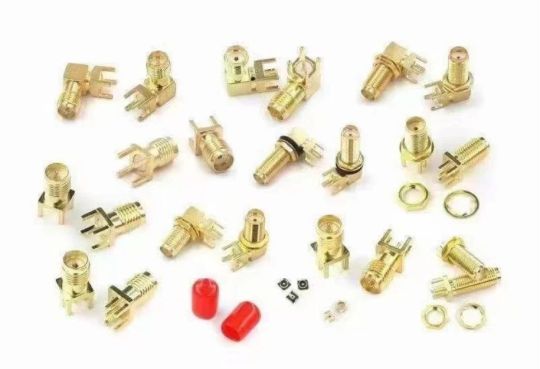
2. RF cables, feeders, cables, RF components, customizable.

3. Built-in spring antenna, FPC antenna, PCB board antenna, antenna debugging and matching OTA testing can be provided for customers.

4. External antenna LORA/4G/5G/WIFI/NB-IOT/GPS/Beidou/RTK high-precision positioning, suction cup antenna/rubber antenna/fiberglass antenna/waterproof cabinet antenna/drone antenna.

We look forward to discussing industry trends, development directions, and possible cooperation with you, and hope to find more opportunities with your company. Welcome to visit and communicate with Feisheng Electronics booth N5A55 in Hall 5 of Shanghai New International Expo Center (SNIEC) at the 23rd International Internet of Things Exhibition · Shanghai, June 18-20, 2025. We look forward to your visit!
0 notes
Text

The GPS PCB Active Patch Antenna is specifically engineered for L1 band applications at 1575.42 MHz. It incorporates a high-performance ceramic patch mounted on a PCB, complete with an integrated low-noise amplifier (LNA) to enhance signal strength. The antenna is supplied with a 1.13mm cable (10cm) and a UFL connector, facilitating seamless integration into compact GPS devices. Its dimensions are 15×15×4mm.
#rf antenna#rf antenna manufacture#telecom#rf antenna india#eteily technology manufactures#manufacturing
0 notes
Text
MiniF27:500mw LoRa Wireless transceiver module
MiniF27 wireless module is designed using Semtech's LoRa chip, featuring a high-precision crystal oscillator, ultra-low receiving and sleep currents, and a sensitivity of -148dBm. It can wake up the microcontroller periodically while maintaining low power consumption. The module's antenna switch is internally

controlled by the chip, reducing the resource demand on the external MCU. Despite its ultra-compact size (same as the LoRa1262), the MiniF27 delivers an output power of up to 27dBm (500mW). Its high integration, small size, and high power make the MiniF27 highly advantageous in IoT and battery-powered applications. MiniF27 strictly uses lead-free technology for production and testing, and meets RoHS and Reach standards.
Frequency Range:433/470/868/915 MHz
(customizable150-960 MHz
Sensitivity:-148dBm @LoRa SX1262
256 bytes FiFo
Maximum output power:29 dBm(800mW)
LoRa, (G)FSK modulation
Data transfer rate: 0.6-300 Kbps @FSK
For details, please click:https://www.nicerf.com/products/ Or click:https://nicerf.en.alibaba.com/productlist.html?spm=a2700.shop_index.88.4.1fec2b006JKUsd For consultation, please contact NiceRF (Email: [email protected]).
1 note
·
View note
Text
📡 Flexible Nb-IoT/LORA Antenna – 90% OFF! Wireless Data Transmission Module!
Enhance your wireless projects with the Flexible Nb-IoT/LORA Antenna. This SMA Male module is perfect for data transmission and works seamlessly with UAV systems and other wireless applications. Designed for long-range communication, this antenna supports Nb-IoT and LORA networks for reliable connectivity. Whether you're working on IoT devices, drones, or other wireless systems, this antenna provides the performance you need.
🛒 Price Now: USD 0.99 (Original price: USD 10.07, 90% OFF!) 🔗 Click & Buy Now: Shop Here!
Take your wireless communication projects to the next level with this high-performance antenna!
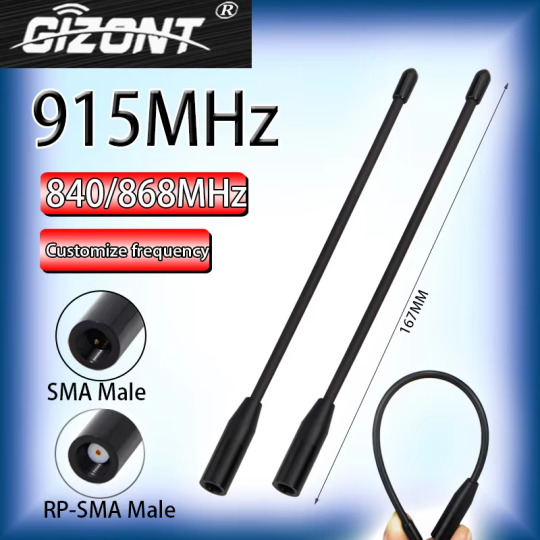
#WirelessModule#NbIoT#LORA#UAVModule#DataTransmission#Antenna#SMAConnector#WirelessCommunication#TechParts#IoTDevices#DroneParts#LongRangeAntenna#AntennaSale#TechDeals#ElectronicsAccessories#AliExpressDeals#DiscountShopping#WirelessTech#AntennaTech#IoTComponents#TechProjects
0 notes
Text
What is the difference between the LoRaWAN wireless module and LoRa gateway wireless transmission technology?
Many individuals find it challenging to differentiate between the LoRaWAN wireless module and LoRa gateway wireless transmission technology, as well as their applications within the realm of IoT.

LoRaWAN specifically pertains to the networking protocol found within the MAC (Media Access Control) layer. In contrast, LoRa serves as a protocol within the physical layer. Although current LoRaWAN networking implementations utilize LoRa as the physical layer, it's worth noting that the LoRaWAN protocol also allows for the use of GFSK (Gaussian Frequency-Shift Keying) as the physical layer in specific frequency bands. From a network layering perspective, LoRaWAN can adopt various physical layer protocols, just as LoRa can serve as the physical layer for other networking technologies.
LoRa, as a technology, falls under the category of LPWAN (Low-Power Wide-Area Network) communication technologies. It represents an ultra-long-distance wireless transmission method based on spread spectrum technology, pioneered and promoted by Semtech in the United States. This approach revolutionizes the previous trade-off between transmission distance and power consumption, offering users a straightforward system capable of achieving extended range, prolonged battery life, and increased capacity. Consequently, it expands the capabilities of sensor networks. Currently, LoRa predominantly operates within free frequency bands globally, including 433/868/915MHz, among others.
On the other hand, LoRaWAN wireless communication stands as an open standard defining the communication protocol for LPWAN technology based on LoRa chips. LoRaWAN defines the Media Access Control (MAC) layer at the data link level and is overseen by the LoRa Alliance. It's crucial to distinguish between LoRa and LoRaWAN because companies like Link Labs utilize a proprietary MAC layer in conjunction with LoRa chips to create more advanced hybrid designs, such as Link Labs' Symphony Link.
LoRaWAN typically employs a star or star-to-star topology, which is generally considered superior to mesh networks due to advantages such as conserving battery power and extending communication range. In a star topology, messages are relayed to a central server through gateways, and each end node can transmit data to multiple gateways. These gateways then forward the data to the web server, where tasks like redundancy detection, security checks, and message scheduling are executed.
In summary, LoRa encompasses solely the link layer protocol, making it suitable for point-to-point (P2P) communication between nodes. In contrast, LoRaWAN includes the network layer, allowing data to be sent to any base station connected to a cloud platform. By connecting the appropriate antenna to its socket, the LoRaWAN module can operate at different frequencies, offering versatility in its applications.
0 notes
Text
LIERDA OCB ANTENNA MODULE
LSD4BT-K55 Module
K55 BLE mesh Standard Module (PCB Antenna)
K55 series of low-power Bluetooth module is a high-performance Bluetooth module which is developed based on the Telink low-power Bluetooth SoC TLSR8250 chip. The module adopts the stamp- type and side plug-in interfaces, is exquisite and compact, is fully lead out via ports and convenient to use, and helps the users omit the complicated RF hardware design, development and production links. Therefore, the users can easily realize the development of Bluetooth application programs on that basis, shorten the R&D cycle, and seize the market opportunities. This model is a pure hardware module that excludes any software. If you need the edition with software, please notify in advance.
Key Benefits
Parameter
·Working Frequency Band
-Working frequency band: 2402-2480MHz
·Ultra-low Power Consumption
-Support 1.8V-3.6V powersupply
-Emission current: ≤20mA (10dBm power
configuration)
-Receiving current: ≤6.5mA (overall current)
-Sleep current: 400nA (SRAM notsaving)
·High-link Budget
-Sensitivity-96dBm±1dBm (1Mbps, PER<30.8%)
-Emission power: Max.10dBm
·Memory Resources
-Internal 512kB Flash (the capacity that
the client can actually use is less than
512kB)
-48kB on-chip SRAM, wherein 32kB can sleep and save
·Compatibility
-Designed interface mode with side
plug-in and stamp holes compatible
·Mesh Functions
-Support BLE
-Support the Bluetooth SIG Mesh
-Support the exclusive Mesh of Telink·Communication Interface
-5 PWM / 16 GPIO / 1 UART(Pin
multiplexing)
Application
PC, Tablet, Mobile Phone, Handheld, and Other Low-Power Peripheral Devices
Smart Household Appliances
Smart City
For more information please visit: https://en.lierda.com/
Hope to be your valued supplier from China. CONTACT: AMINA ZHU E MAIL: [email protected] WhatsApp: 008615061516896 https://en.lierda.com/
youtube
IoTembedded #microcontrollers #sensors #wirelesscommunication #IoTgateways #IoTcloudplatforms #embeddedmicro-controltechnology #RFhardwareR&D #5Gcommunicationsolution #NB-loT #LoRa #Wi-Fi #Wi-SUN #BLE #IOTsystem #semiconductordistribution #cloudpipe-endsolutions #Cat.1 #Wi-SUN #ZigBee #AIrecognition #IoTbasicservice
#IoT
#InternetofThings
0 notes